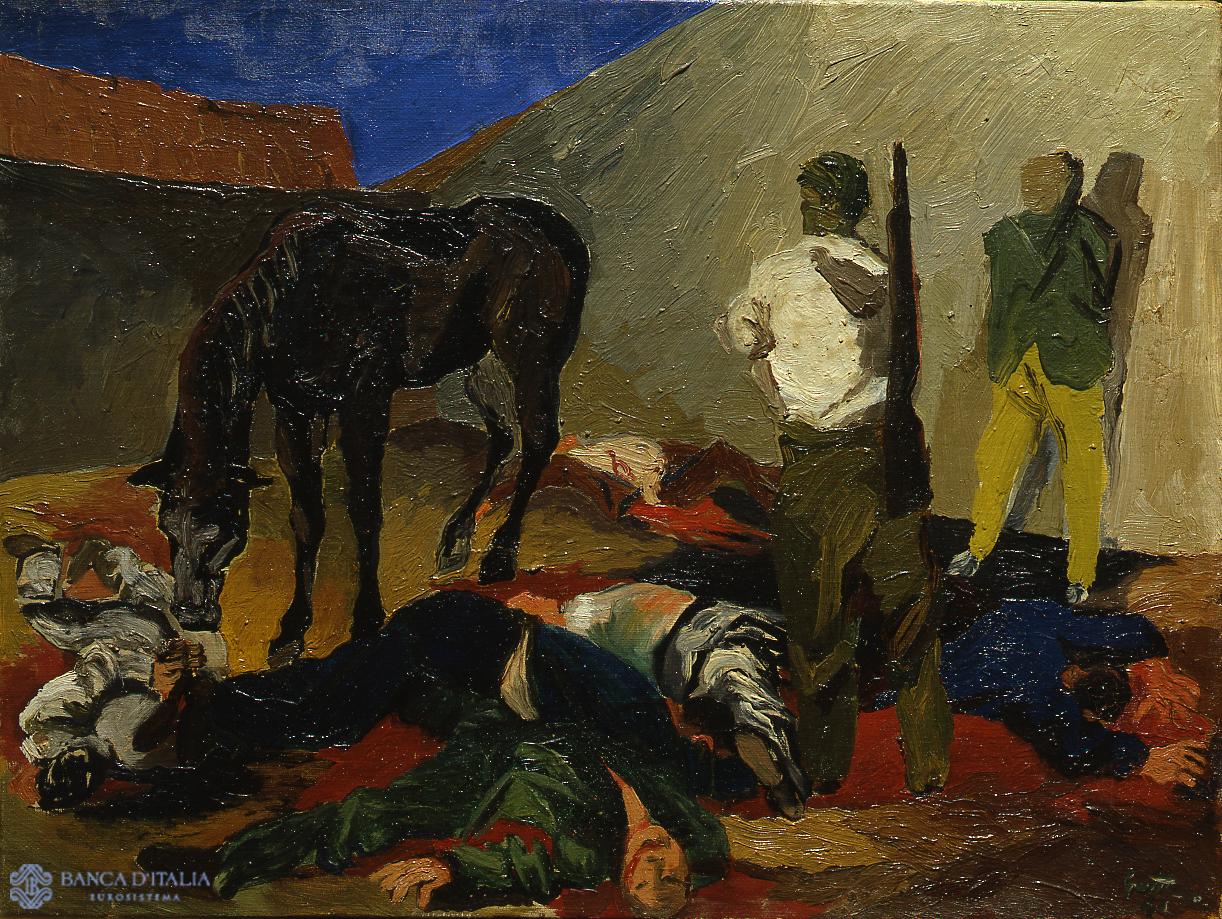The bodies of the fallen lie on the ground, shot, in red rivers of blood. A horse bends over one, seeming to question the reason for such a death. Two men, one of them armed, watch; are they perhaps responsible for this massacre? An obtuse and questioning silence pervades the scene. On the right, a limestone wall runs from the foreground to the background, anxiously enclosing the half-finished narrative but also leading the viewer’s eye towards the back of the painting, recalling Fattori’s famous small painting In vedetta, which Guttuso seems to have in mind.
This is the first peak of the painter’s mature phase. Among the first in Italy, he has already acknowledged neo-cubist language, but here he still adheres to the dramatic key of expressionism which he brings to a climax precisely in the last years of the 1930s and the early years of the 1940s, with its highest point being the great Fuga dall’Etna, exhibited at the second Premio Bergamo in 1940. The violently shaded colour, the flickering linear style, the predominance of dark tones originate in the malaise of the years in which the tragedy of war already looms over art, in particular in Rome, driving Guttuso to hark back to a significant history, illustrious predecessors stretching from Goya to Van Gogh to Ensor. And so, he abandons the magical and mythical atmosphere of his beginnings, close to Corrado Cagli, and arrives at that exacerbated sense of life which he will make his own.
Renato Guttuso, Massacro
Massacro
20th century AD
Painting
Figurative

Artist
Date
1941
Material and technique
Oil on canvas
Measurements
44,5 x 60 cm
Compiler
Fabrizio D'Amico
